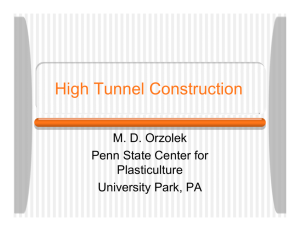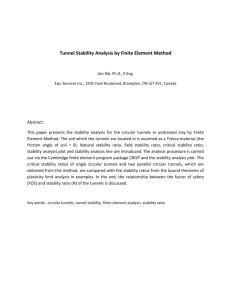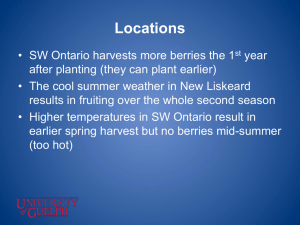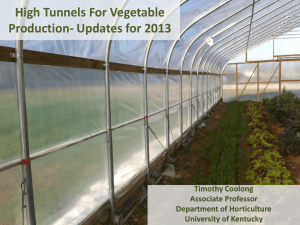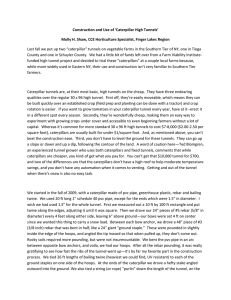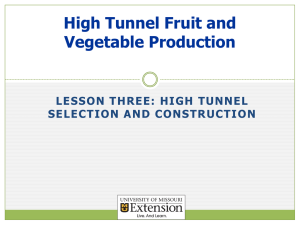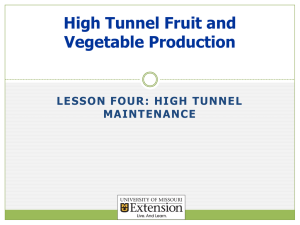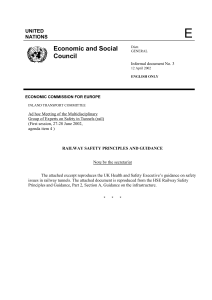Low tunnels for vegetable production
advertisement
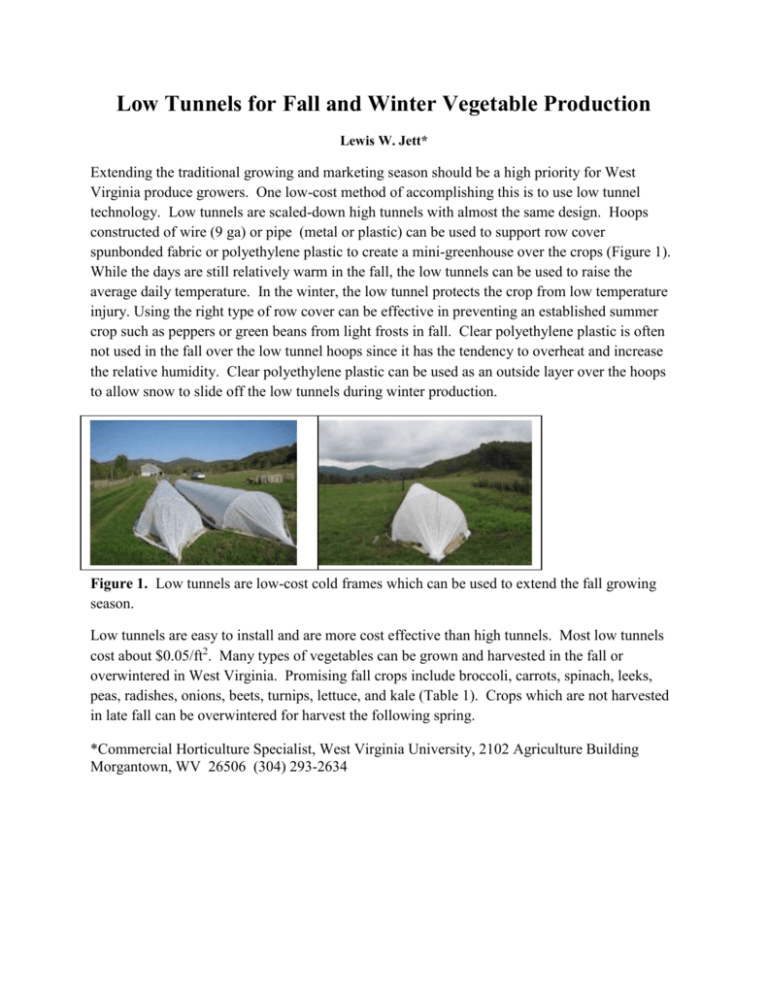
Low Tunnels for Fall and Winter Vegetable Production Lewis W. Jett* Extending the traditional growing and marketing season should be a high priority for West Virginia produce growers. One low-cost method of accomplishing this is to use low tunnel technology. Low tunnels are scaled-down high tunnels with almost the same design. Hoops constructed of wire (9 ga) or pipe (metal or plastic) can be used to support row cover spunbonded fabric or polyethylene plastic to create a mini-greenhouse over the crops (Figure 1). While the days are still relatively warm in the fall, the low tunnels can be used to raise the average daily temperature. In the winter, the low tunnel protects the crop from low temperature injury. Using the right type of row cover can be effective in preventing an established summer crop such as peppers or green beans from light frosts in fall. Clear polyethylene plastic is often not used in the fall over the low tunnel hoops since it has the tendency to overheat and increase the relative humidity. Clear polyethylene plastic can be used as an outside layer over the hoops to allow snow to slide off the low tunnels during winter production. Figure 1. Low tunnels are low-cost cold frames which can be used to extend the fall growing season. Low tunnels are easy to install and are more cost effective than high tunnels. Most low tunnels cost about $0.05/ft2. Many types of vegetables can be grown and harvested in the fall or overwintered in West Virginia. Promising fall crops include broccoli, carrots, spinach, leeks, peas, radishes, onions, beets, turnips, lettuce, and kale (Table 1). Crops which are not harvested in late fall can be overwintered for harvest the following spring. *Commercial Horticulture Specialist, West Virginia University, 2102 Agriculture Building Morgantown, WV 26506 (304) 293-2634 Table 1. Vegetable crops for fall and winter production in West Virginia. .Crop Recommended varieties Kestrel, Red Ace, Touchstone Gold Broccoli* Gypsy, Packman, Everest Carrots Mokum, Bolero, Ya Ya, Cauliflower* Candid Charm, Fremont Kale* Winterbor, Red Russian Kohlrabi* Winner, Kohlribi Lettuce* Winter Density, Ermosa Swiss Chard Bright Lights, Argentata Spinach Tyee, Melody, Space Peas Lincoln, Mr. Big, Cascadia Onions Candy, Red Wing Leeks King Richard, Lancelot Radishes Cherriette, D’Avignon Turnip Hakurei (white) *Can be established as transplants. Beets Relative seeding date Early-mid August Early August Early-mid-August Early August August-October Early-mid-August August-September July-early September Late August-mid-October Early August August August August-mid-October August-October Construction of the low tunnel is relatively easy. Small low tunnels are usually constructed of wire hoops approximately 18 inches in height. These types of low tunnels are best suited to short-term frost protection. A potentially more effective low tunnel design is a larger hoop constructed from metal or plastic pipe. The hoop is 4-6 feet wide and approximately 40 inches in height at the center. A 10-14 ft-wide row cover is placed over the hoops to create a protected environment for crop growth. The larger low tunnel hoops are often referred to as Quick Hoops™ by gardeners who use them to extend the growing season. The emt conduit pipe (10 ft segments) are bent to a half-circle using a small, portable pipe bender (Figure 2). While pvc pipe can be used, it has a shorter life span than the metal hoops. After the pipe is bent, it is inserted into the ground approximately 5-6 inches. Each bow is spaced 5 feet apart. A 10-14-foot-wide row cover blanket is placed over the hoops and secured at each hoop with a sand (rock) bag or sod staples. For winter, the covering can be buried on the edges to secure it against wind. A second layer of row cover or a heavier weight row cover (> 1 oz/yd2) can be used to provide greater protection over the winter. The ends are tied down with string and stakes on each end. The length of the low tunnel can vary with the length of the garden plot. To harvest or weed, the row cover is lifted on each side to access the low tunnel. Four-foot-wide hoops are the best low tunnel structures since they efficiently cover a 4 foot wide raised bed which is accessible from 2 feet on either side. Additional Reference Material Coleman, E. 2009. The Winter Harvest Handbook. Chelsea Green Publishing Co., White River Junction, VT.
